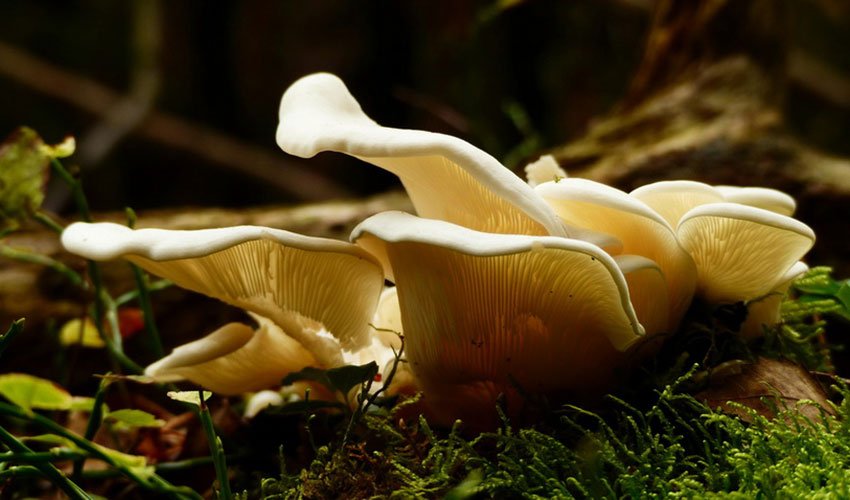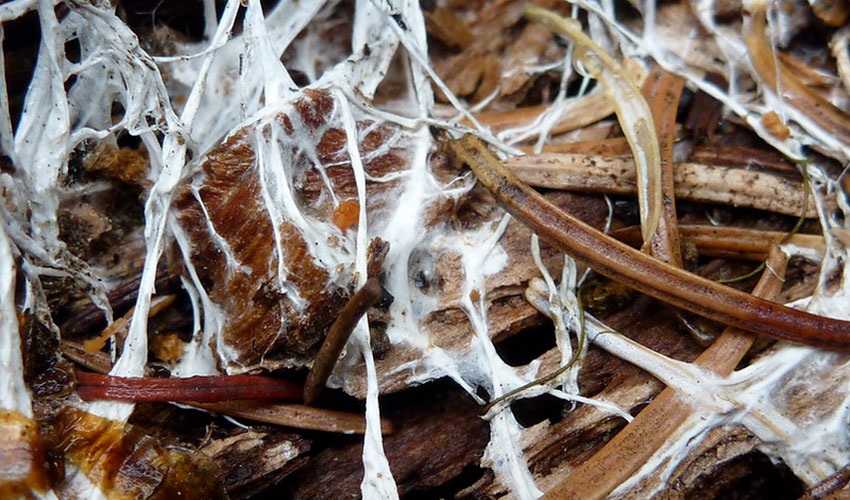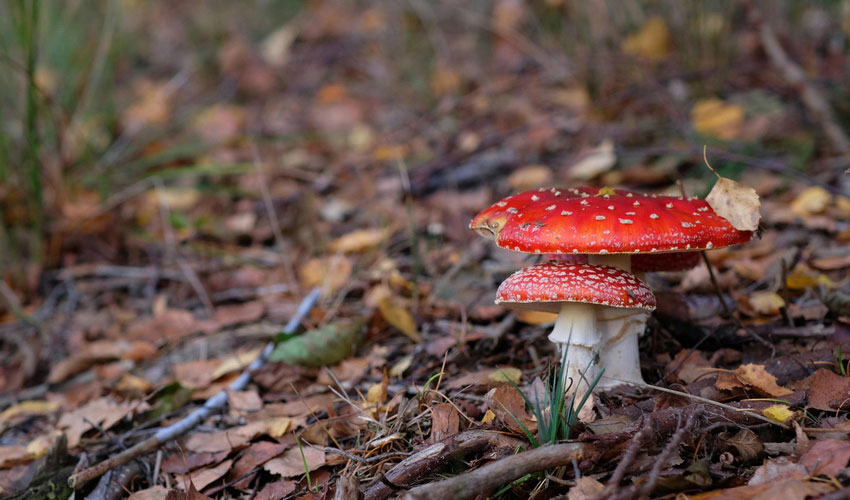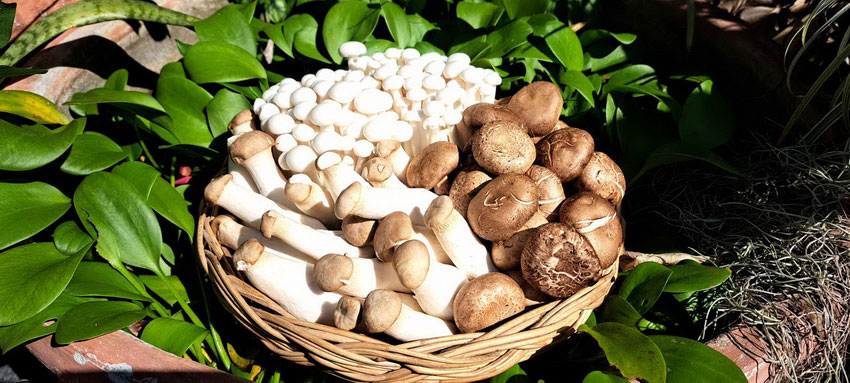Fungi Fascination... Beyond the Trends
From the shadowy depths of damp forests to the vibrant, sun-soaked patches of grand meadows, a hidden kingdom thrives, fascinating me with its complexities and wonders. This is the world of mycology. My obsession with fungi sparked when I was a teenager. Frequently I walked through a nearby forest and it was there where I stumbled upon a cluster of vibrant mushrooms that looked like they belonged in a fairy tale. What I initially saw as mere curiosities soon unravelled into a tapestry of interconnected ecosystems, remarkable life cycles, and profound medicinal properties. The sheer diversity of fungi, from the elegant fruiting bodies of mushrooms to the microscopic networks of mycelium that connect entire landscapes, transcends mere biology, revealing an intricate web of life that both sustains and transforms our world. As I dig deeper into this captivating sphere, I find myself enchanted not just by the fungi themselves, but by the stories they tell about resilience, symbiosis, and the hidden marvels of nature.
Mycology has undoubtedly woven itself into the fabric of your everyday life, whether you realise it or not. Consider the last time you enjoyed a delicious dish featuring mushrooms or perhaps the moment you took that penicillin pill that helped you recover from an illness. Behind these seemingly mundane experiences lies a fascinating and vital scientific field, mycology. Mycologists, the dedicated researchers who explore the incredible world of fungi, play a critical role in our health, food systems, and ecosystems. And let me tell you, it’s an incredibly fascinating world!

Yet, it's astonishing to note that mycology remains an underappreciated and sparsely promoted discipline within the scientific community. Despite its profound implications, relatively few universities in the world offer comprehensive mycology programs, and there's little sign that this trend is changing. This lack of focus is particularly perplexing, given that fungal pathogens currently afflict over 1 billion persons globally, causing severe health issues and harbingers of despair. To compound the crisis, these relentless fungi are responsible for decimating nearly a third of the world’s food production.
So, if fungi wield such significant influence, why do we find so few scientists devoted to unravelling their mysteries and addressing their threats? On the flip side, it's essential to acknowledge the numerous benefits fungi bring to humanity. From the mushrooms that grace our plates to the life-saving antibiotics derived from certain fungi, our lives are entwined with these amazing organisms in ways many of us have yet to fully appreciate. In a world where the impact of fungi is both astounding and alarming, the need for more mycologists, advocates, researchers, and innovators is clearer than ever. The potential for discoveries that could revolutionise medicine, agriculture, and ecological sustainability is immense. It's time to shine a light on the fungal kingdom and recognise the mycologists whose work could very well change the course of our lives for the better.
Understanding the Differences Between Mycology, Mycelia & Mycorrhizae
Mycology, the fascinating study of fungi, delves into an entire kingdom of life that remains largely unexplored and bursting with potential. Just as botany is the scientific examination of plants, mycology focuses exclusively on fungi, an often-overlooked world of organisms that plays a crucial role in our ecosystems. Most scientists categorise mycologists as a specialised branch of microbiologists, highlighting the complexity and breadth of this discipline. To date, researchers have identified over 70,000 distinct species of fungi, yet this figure is only the tip of the iceberg. Estimates suggest that there may be as many as 1.5 million fungal species lurking in diverse habitats around the world, possibly up to 20 times the number we currently recognise. For perspective, the world of flowering plants is significantly smaller, with only about 350,000 named species. This comparison underscores the vastness of the fungal kingdom and the striking reality that we have only scratched the surface of our understanding of this complex world.
At the heart of fungi's life cycle lies mycelium, the intricate and vegetative part of these organisms. Often invisible to the naked eye, this branching network is a true marvel of nature that can weave through the soil or damp woodchips, appearing as a delicate, white web. Mycelium can establish extensive underground networks, and some researchers believe that certain mycelial networks might be the largest living organisms on Earth, which is an astonishing notion that invites further inquiry into their capabilities and roles in the environment. Mushrooms, often regarded as the public face of fungi, serve a distinct purpose. These fruiting bodies are the reproductive structures of the mycelial networks, analogous to the way flowers and fruits emerge from a peach tree. In this botanical analogy, the mycelia represent the tree's roots, trunk, and leaves, while the mushrooms correspond to the tree’s blooms and peaches. This connection illustrates the significance of fungi not only in their ecosystems but also in the larger tapestry of life on our planet.

Additionally, many fungi engage in symbiotic relationships with plants through structures known as mycorrhizae. These connections are vital for nutrient exchange and underscore the intertwined fates of plant and fungal life forms. As we delve deeper into the world of mycology, we begin to uncover the critical roles that fungi play in sustaining ecosystems, enhancing soil health, and supporting the very fabric of life itself. The study of mycology invites us to explore the wonders of a kingdom that is both massive and mysterious, a field where there is still so much to discover.
The Beginnings of Mycology
The relationship between humans and fungi is not only ancient but foundational, predating our agricultural practices by thousands of years. Remarkably, studies examining plaque found on the teeth of prehistoric humans indicate that our ancestors were consuming mushrooms as far back as 18,000 years ago. This deep-rooted connection highlights the dynamic role fungi have played throughout human history, inspiring countless applications across various spheres of life. As civilisation evolved, so did our interaction with this fascinating kingdom. In the late 19th and early 20th centuries, pioneers such as the Mycological Society of America and the British Mycological Society began uniting mycologists, laying the groundwork for a vibrant scientific community. This initiative paved the way for more contemporary organizations like the North American Mycological Association and the International Mycological Association, among others. These groups have not only connected researchers globally but have also published groundbreaking studies that have significantly enriched our understanding of fungi and their many roles within ecosystems and human health.
Yet, despite its rich history and the undeniable urgency of current challenges such as fungal pathogens that afflict over one billion people worldwide and the staggering loss of one-third of global food production due to fungal infections, mycology remains a surprisingly underdeveloped field. Most universities lack dedicated mycology programs, and there’s little sign that this trend will change anytime soon. This presents a paradox: while fungi pose serious threats to public health and food security, the discipline focused on studying them does not seem to be expanding to meet these pressing needs. On the bright side, humanity has also tapped into the incredible benefits that fungi offer, from nutritious edible varieties to potent medicinal compounds. The diverse ways we incorporate fungi into our diets and healthcare systems underscore the essential roles they play in our survival and well-being. In this complex interplay between danger and benefit, it is essential to cultivate a greater appreciation and understanding of fungi, especially as we navigate the challenges they present in modern society. As we stand at the crossroads of mycology and human health, the potential for discovery and mutual advancement remains vast and unexplored.

Current Mycology Trends
Fungi, despite their ecological significance and fascinating diversity, remain largely overlooked in scientific research across the globe. This neglect stems from a variety of challenges inherent to the study of these remarkable organisms. To begin with, fungi present unique hurdles for researchers. Many fungal species defy cultivation in laboratory settings, making it incredibly difficult to study them in controlled environments. In nature, fungi exhibit a fleeting fruiting period, during which their iconic mushrooms momentarily emerge. Outside of this brief window, locating the underground mycelial networks becomes an increasingly daunting task. Without these visible indicators, researchers face significant challenges in identifying and studying fungal species. Compounding these difficulties is the limited academic infrastructure devoted to mycology. Few universities offer specialised courses or dedicated programs for the study of fungi, leaving aspiring mycologists without formal paths to pursue their interests.
Historically, mycologists were often found within botany departments, a somewhat ironic arrangement given that fungi are more closely related to animals than to plants. However, as these departments continue to face budgetary constraints and shrinking enrolments, the support for mycologists has dwindled. Consequently, these often-isolated researchers find themselves navigating a complex landscape of academic politics with little backing. Despite the rising popularity of amateur mushroom foraging, a curious phenomenon has emerged: the number of people pursuing mycology as a research discipline has not experienced a corresponding increase. This disconnection raises questions about the future of fungal research. Some mycologists argue that the fragmentation of the field, marked by a lack of coordination, collaboration, and specialisation has resulted in diminishing funding opportunities for their work at universities. The future of mycology remains precarious as the scientific community continues to grapple with the implications of this oversight, leaving the incredible world of fungi shrouded in mystery and ripe for exploration.
What Is a Fungus?
Fungi, an enigmatic yet vital kingdom of life, exhibit a fascinating array of characteristics that transcend the limitations of definition. While the taxonomy of living organisms is often a topic of lively debate, fungi are universally recognised as a distinct kingdom, setting them apart from plants, animals, and other life forms. At the core of what makes fungi unique is their eukaryotic cellular structure. This means that their cells contain a well-defined nucleus, which is a key differentiator from prokaryotes like bacteria. Unlike many bacteria, fungi typically thrive as multicellular organisms, further distinguishing them within the broader eukaryotic realm that includes both plants and animals. However, fungi diverge significantly from both these groups in their fundamental characteristics. For instance, unlike animals, fungi are immobile; they do not have the ability to move from one place to another. Their reproduction also follows a different path, relying predominantly on the production of spores rather than sexual reproduction. In contrast to plants, fungi lack the remarkable ability to harness sunlight for photosynthesis, an essential process for energy production. Instead, fungi engage in a unique nutritional strategy known as decomposition, where they absorb nutrients from their surroundings, playing a critical role in recycling organic matter in ecosystems.
Among the diverse array of fungi, lichens represent a particularly intriguing phenomenon. These organisms embody a remarkable partnership between a species of fungus and a species of algae, existing in a symbiotic relationship that is complex and obligatory. The classification of lichens within the broader tree of life poses an intriguing question, as they challenge traditional categorisations and blur the lines between kingdoms. Dominating the fungal kingdom is the vast order of ascomycetes, which encompasses the majority of named fungal species. This order is remarkable not only for its size but also for the incredible diversity of forms and functions it represents, showcasing the rich tapestry of life that fungi contribute to our planet. In summary, fungi stand as a testament to the complexity of life on Earth, thriving in myriad forms and serving as essential contributors to the health of ecosystems, while challenging our understanding of the biological world.
Field of Mycology
Mycologists delve into an expansive world that intertwines the intricate world of fungi with numerous fields, from cutting-edge biotechnology to revolutionary addiction therapy. The influence of fungi permeates our everyday existence, found in the foods we enjoy, the landscapes we inhabit, and the medicines that heal us. This rich kingdom of organisms is not merely a backdrop; it plays a pivotal role in shaping our lives in countless ways. Below is an insightful glimpse into the diverse subjects that mycologists explore, showcasing the remarkable impact of fungi on our world.

Fungi We Eat
If you’ve journeyed this far into the article, there's a good chance you’ve savoured your fair share of mushrooms. The cultivation of these remarkable fungi has surged in popularity as more people embrace plant-based lifestyles. Yet, strikingly, beyond a select few cultivated species, the majority of edible mushrooms are still foraged from the wild. This group boasts true culinary treasures such as fragrant chanterelles, luxurious truffles, and earthy morels. But mushrooms are not just a feast for the taste buds; they also pack a powerful health punch. Recent research has revealed a compelling connection between regular mushroom consumption and a staggering 45% reduction in cancer risk! This astonishing finding only adds to the growing visibility of mushrooms as a nutritional powerhouse in our diets. Additionally, new wellness trends are emerging around exotic fungi, including the arctic super-food known as Chaga, lauded for its potential health benefits. As the world increasingly recognises the myriad ways mushrooms can enhance our culinary experiences and promote well-being, there has never been a more thrilling time to explore the fascinating universe of edible fungi.
Mychorrizae & the Habitat
Fungi play an indispensable role in the intricate tapestry of our ecosystems. As essential decomposers, they are responsible for breaking down organic material, ensuring that fallen logs and dead animals are transformed back into the Earth, nourishing the soil and sustaining life. In many habitats, fungi are the unsung heroes of decomposition, facilitating nutrient cycling and maintaining ecological balance. Moreover, fungi are vital allies to plants, boosting their growth in profound ways. While most plants cannot produce their own nitrogen, a fundamental element for their development, mycorrhizal fungi have the remarkable ability to convert atmospheric nitrogen into a form that plants can readily absorb. In this mutually beneficial partnership, plants supply mycorrhizae with energy, while fungi provide them with essential nutrients. These symbiotic relationships not only enhance individual plant health but also bolster the biodiversity and resilience of ecosystems across our planet, creating a more robust and vibrant natural world.
Fungal Pathology in Medicine
We owe a great deal to fungi, as they have played a pivotal role in extending human lifespans. The groundbreaking discovery of penicillin in 1928 marked a turning point for humanity. This remarkable antibiotic works by interfering with the enzymes that bacteria use to build their cell walls, effectively dismantling and neutralising harmful pathogens in our bodies. The emergence of penicillin ushered in the antibiotic revolution, revolutionising medicine and leading to a staggering increase in life expectancy by nearly 30 years in the United States alone. Our gratitude for fungi extends far beyond the kitchen; they have truly transformed our health and longevity.
Fungal Pathogens
Fungi represent the leading culprit behind plant diseases, impacting agriculture in profound ways. These insidious organisms can infiltrate plants through leaves, bark, or roots, launching devastating attacks that can wipe out entire harvests of essential crops. Staples like rice, corn, cereals, bananas, tomatoes, and cotton are among those at risk. The sheer magnitude of their threat makes fungal pathogens a formidable adversary in the agricultural world. It’s no surprise, then, that countless mycologists dedicate their careers to revealing the complex relationship between fungi and plant health, striving to safeguard the future of our food supply.

Entheogenic (Magic Mushrooms)
Yes, I’m referring to the remarkable world of psilocybin mushrooms. Psilocybin is a potent hallucinogenic compound present in certain fungi, a unique group that can be found across the globe. Archaeological findings suggest that humans have utilised these extraordinary mushrooms for thousands of years, with some of the earliest evidence dating back 7,000 to 9,000 years, illustrated by captivating rock art in Northern Africa that hints at their psychedelic significance in ancient cultures. Today, we are witnessing a remarkable resurgence of interest and research surrounding these powerful mushrooms. Scientific investigations are uncovering compelling evidence that psilocybin has the potential to be a transformative tool in treating conditions such as addiction and depression. As more studies validate its efficacy, we may be on the cusp of a significant shift in public perception, leading to a broader acceptance and incorporation of these medicinal fungi into therapeutic practices. In the coming decades, we might see psilocybin mushrooms embraced not only as a topic of intrigue but also as a valuable resource for healing and mental wellness.
What’s Keeping Mycologists from Growing in Numbers?
The truth is that I’m not entirely certain. However, it appears that there’s a pressing need for more researchers to delve into the fascinating world of fungi. These organisms possess the potential to offer immense benefits to humanity, yet they can also be devastatingly harmful. Their dual nature might pose significant challenges for scientific inquiry, or perhaps the realm of fungal research simply lacks the allure that attracts government and private funding. Regardless of the reasons, it’s clear that expanding our investment in fungal biology could yield substantial rewards for our species and enhance our understanding of these complex organisms. Encouraging more scholars to focus on fungi could lead to discoveries that positively impact medicine, agriculture, and environmental sustainability, ultimately benefiting all of humanity.
Paul Stamets
Paul Stamets, a luminary in the realm of mycology and the visionary founder and director of Fungi Perfecti, LLC, has captivated the world with his profound knowledge and passion for mushrooms for over three decades. With an unwavering commitment to the study and cultivation of both edible and medicinal fungi, Stamets has made significant strides in the field, being credited with the discovery of four new mushroom species that enhance our understanding of these enigmatic organisms. As an accomplished author, he has penned five influential books that serve as essential resources for enthusiasts and scholars alike. His notable works include MycoMedicinals: An Informational Treatise on Mushrooms, Psilocybin Mushrooms of the World, Growing Gourmet and Medicinal Mushrooms, Mushroom Cultivator, and Psilocybe Mushrooms & Their Allies. His most recent publication, Mycelium Running: How Mushrooms Can Help Save the World, encapsulates his revolutionary ideas on how fungi can address some of the most pressing environmental and health challenges of our time.
Stamets advocates for a deeply interconnected global ecosystem and firmly believes that expanding our understanding of fungi is key to mitigating pollution and improving health outcomes worldwide. His dedication extends beyond academia; he is a passionate guardian of the ancient old-growth forests of the Pacific Northwest, a rich habitat for many rare mushroom species. Driven by an insatiable curiosity, Stamets tirelessly explores these forests, seeking to preserve, protect, and clone ancestral strains that could hold the secrets to sustainable living and ecological restoration. His visionary work has not gone unnoticed; in 1998, he was honoured with the Bioneers Award from the Collective Heritage Institute, and the following year, he received the Founder of a New Northwest Award from the Pacific Rim Association of Resource Conservation and Development Councils. Through his groundbreaking research and unwavering dedication, Paul Stamets continues to inspire a global movement toward appreciating and harnessing the incredible potential of fungi for the betterment of our world.
"Mushrooms can provide the missing links in our health, wellness, and longevity." – Paul Stamets






















